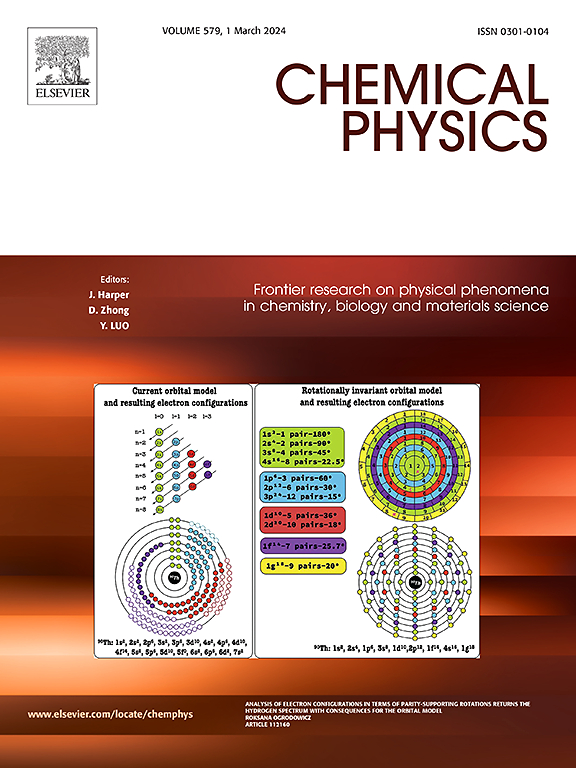生态友好型锌金属表面缓蚀剂的防腐性能:计算模型
IF 2.4
3区 化学
Q4 CHEMISTRY, PHYSICAL
引用次数: 0
摘要
为了解决普遍存在的材料降解问题,必须探索无害的生态友好型缓蚀剂。本研究对精氨酸(Arg)和脯氨酸(Pro)这两种氨基酸进行了深入的计算分析,以评估它们作为防止锌表面腐蚀的可持续抑制剂的作用。目前的研究通过使用功能B3LYP/ 6-311 + G(d,p)进行DFT计算,并通过进行自一致电荷密度-功能紧密结合(SCC-DFTB)模拟,研究了Pro和Arg与Zn(110)表面的局部和全局化学反应性以及结合相互作用。结果表明,Arg具有明显的粘附特性,这体现在其键合和电子性能上。基于SCC-DFTB模拟,锌原子与这些植物化学物质之间形成共价键。计算出Arg在Zn(110)模型表面的粘附能为- 2.531 eV,而Pro的粘附能估计约为- 0.907 eV。此外,Arg和Pro的带隙减小幅度分别为4.689和5.811 eV。Arg的带隙减小更大,表明其与Zn(11 - 10)模型的相互作用更有效。该研究强调了Arg在抑制腐蚀方面的有效性,并提供了在分子水平上如何相互作用的详细见解。这为更深入的研究和环保防腐方法的实际应用提供了机会。本文章由计算机程序翻译,如有差异,请以英文原文为准。
Corrosion protection performance of eco-friendly inhibitor for zinc metal surface: Computational modeling
In order to tackle the prevalent problem of material degradation, it is essential to explore eco-friendly corrosion inhibitors which are benign. The current study carries out an in-depth computational analysis of two amino acids, namely arginine (Arg) and proline (Pro) to assess their as sustainable inhibitors for preventing zinc surface corrosion. The current piece of research investigated both the local and global chemical reactivity along with binding interactions of Pro and Arg with the surface of Zn (110) model by performing DFT calculations using the functional B3LYP/6–311 + G(d,p) and by performing self-consistent-charge density-functional tight-binding (SCC-DFTB) simulations. Based on the results, Arg exhibited noticeable adhesion characteristics, as revealed by its bonding and electronic properties. Based upon the SCC-DFTB simulations, covalent linkages were formed between the Zn atoms and these phytochemicals. The adhesion energy of Arg on the surface of Zn (1 1 0) model is calculated to be −2.531 eV, whereas this value is estimated to be approximately −0.907 eV for Pro. Additionally, the band gap reduction for Arg and Pro was found to be 4.689 and 5.811 eV, respectively. The greater band gap reduction observed for Arg indicates a more effective interaction with Zn (1 1 0) model. The study highlights the effectiveness of Arg in inhibiting corrosion and offers a detailed insight into how it interacts at a molecular level. This opens up opportunities for more in-depth research and practical use in environmentally friendly corrosion prevention methods.
求助全文
通过发布文献求助,成功后即可免费获取论文全文。
去求助
来源期刊

Chemical Physics
化学-物理:原子、分子和化学物理
CiteScore
4.60
自引率
4.30%
发文量
278
审稿时长
39 days
期刊介绍:
Chemical Physics publishes experimental and theoretical papers on all aspects of chemical physics. In this journal, experiments are related to theory, and in turn theoretical papers are related to present or future experiments. Subjects covered include: spectroscopy and molecular structure, interacting systems, relaxation phenomena, biological systems, materials, fundamental problems in molecular reactivity, molecular quantum theory and statistical mechanics. Computational chemistry studies of routine character are not appropriate for this journal.
 求助内容:
求助内容: 应助结果提醒方式:
应助结果提醒方式:


